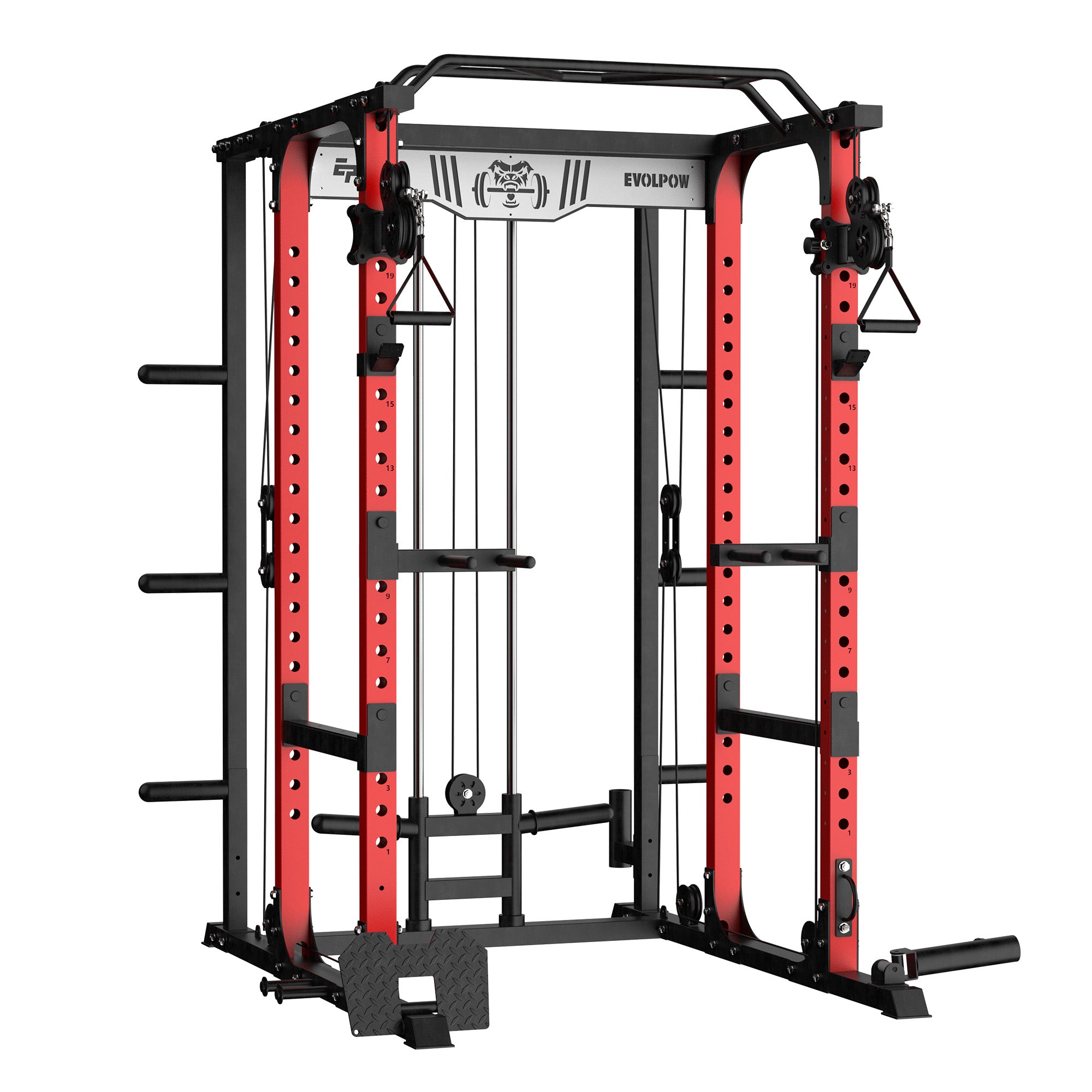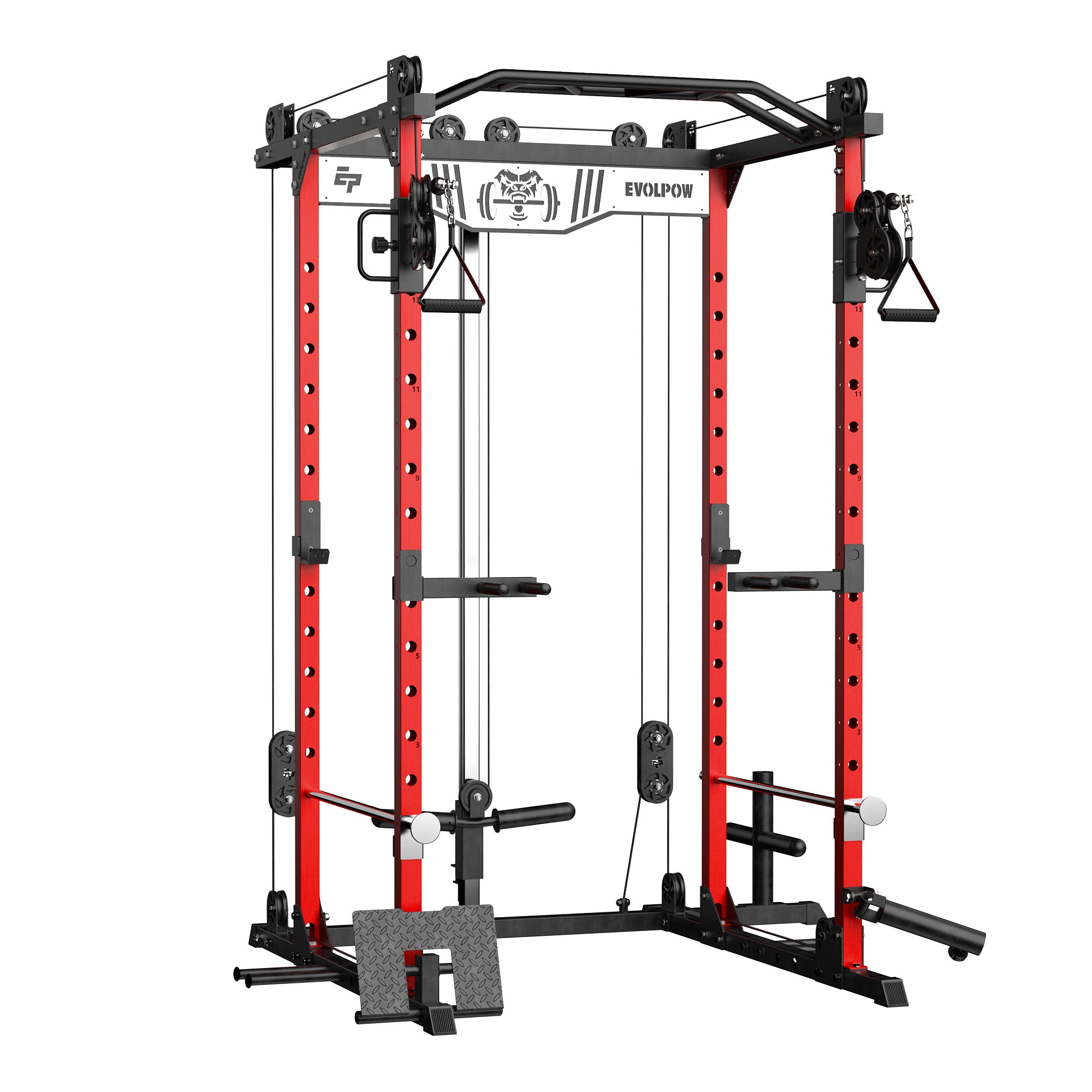On the journey to achieving a healthy physique and perfect body, lower body exercises are undoubtedly an indispensable component. Strong and powerful leg muscles not only enhance overall athletic performance but also lay a solid foundation for the body, making daily life more effortless and comfortable. Among the myriad of lower body exercises, squatting movements and deadlifts are considered the two major powerhouses. Squatting movements are beloved by fitness enthusiasts for their comprehensive leg muscle workout, as well as their ability to enhance body coordination and balance. Meanwhile, deadlifts are renowned for their powerful stimulation of the glutes, thighs, and back muscles, making them essential for sculpting the perfect lower body contour. Let's now explore these best lower body exercises together and appreciate the endless charm and strength they bring.
Content
-
Best Lower Body Exercises
-
Conclusion
Best Lower Body Exercises
-
Bodyweight Squat

The bodyweight squat, as a fundamental physical training exercise, deeply engages the muscles of the lower body, particularly the thighs and glutes. When performing this exercise, stand with feet slightly wider than hip-width apart, toes pointing slightly outward, and ensure that body weight is evenly distributed between both feet. As you descend, keep your back straight, chest up, maintaining the natural curve of the spine to avoid injury to the lower back. Additionally, ensure that the knees do not extend beyond the vertical height of the toes, and keep your arms extended forward at chest level. Pause briefly when the hips reach the lowest point, then smoothly push back up to the starting position using the strength of your hips and thighs. Throughout the entire movement, maintain coordinated breathing—inhale as you descend and exhale as you ascend.
-
Jump Squats

Jump squats are an effective exercise that can comprehensively enhance lower body strength and explosiveness. To perform jump squats, begin by squatting deeply, lowering the entire body until the hips are below the knees. Then, forcefully push through the legs to jump explosively upwards. Upon landing, quickly squat down again, and rapidly rise back up, repeating this motion. When performing jump squats, the key is to squat down slightly slower, inhaling deeply to prepare for the jump. As you stand up, the movement should be rapid, exhaling to aid in enhancing explosiveness.
-
Bulgarian Split Squat

To begin, clearly mark a line on the floor and ensure that the front foot aligns precisely with it. The distance from the front foot to the rear support should roughly equal the vertical height from the iliac crest to the ground, aiding in maintaining balance and stability during the movement.
Once prepared with a barbell placed on the shoulders or holding dumbbells, align the front foot precisely with the marked line and proceed with the split squat movement. Then, smoothly shift the weight onto the front foot while lifting and placing the rear foot on the support pad. The width between the two feet should roughly match the width of the hips to maintain body balance.
Throughout the entire movement, keep the torso upright. Additionally, the front foot should point forward, and the trajectory of the front knee should remain in line with it to avoid unnecessary twisting and injury. When lowering the rear knee, ensure it makes contact with a foam pad placed on the ground, with a thickness of 1-2 inches, to provide sufficient cushioning and support.
After completing a set of exercises for the prescribed number of repetitions, switch to the other leg to ensure both legs receive adequate training.
-
Traditional Deadlift

When performing the traditional deadlift, it is essential to first adjust your setup position. Keep your feet and hip joints at an appropriate distance apart, with your toes slightly turned outward, ensuring there is ample space between your calves and the barbell. Grip the barbell tightly with both hands, with a grip slightly wider than shoulder-width, ensuring the barbell is snug against your shins.
Throughout the movement, maintain a straight back and engage your core to avoid arching or rounding of the lower back. With the movement of extending your hips and knees, smoothly lift the barbell from the ground to a standing position.
Throughout the entire movement, the barbell should always be positioned behind your shoulders, with your shoulder blades directly over the barbell, chest lifted, and hips tightened forward. This ensures effective power transmission while reducing the risk of injury.
-
Romanian Deadlift

In the Romanian deadlift, the starting position involves the barbell positioned in front of the pelvis, with a grip slightly wider than shoulder-width, arms straight, feet slightly wider than hip-width apart, knees slightly bent, and the shoulder blades slightly retracted, chest up, ribs down, and abdomen tight.
During the movement, begin by lowering the barbell while pushing the hips back as far as possible, keeping the barbell close to the body, head looking forward, and shoulders back. When the lower back can no longer remain flat and begins to round, reaching the critical point of the movement, which varies for different individuals. From this critical point, contract the hamstrings and glutes, shift the hips forward, stand up straight, and return to the starting position.
Throughout this process, ensure that the pelvis does not tilt forward and avoid using explosive force to quickly lift the barbell, and to ensure that the back remains straight and locked, avoiding arching or excessive hyperextension, and avoid the knees from moving forward to prevent excessive involvement of the quadriceps.
Conclusion
The five lower body exercises introduced above not only comprehensively train the muscles of the thighs, glutes, and lower back, but also enhance body stability and strength. However, regardless of the exercise performed, it is important to ensure proper form and stay within the body's limits to avoid injuries caused by overtraining.
Q&A
Q: Are 5 exercises enough for legs?
A: 3-to 5 exercises per leg workout are enough.
Q: How many squats per day?
A: The number of squats to be done each day actually depends on individual physical condition, exercise goals, and current fitness level. Generally, beginners can start with 20-30 squats per day and gradually increase to 50-100 or more as fitness improves.
Q: Can I exercise lower body every day?
A: Generally, it's recommended to train your legs three times a week, with each workout lasting 15 to 20 minutes.
Reference
https://www.verywellfit.com/best-lowerbody-weight-training-exercises-3498517
https://www.onepeloton.com/blog/lower-body-strength/
https://barbend.com/best-lower-body-exercises/
https://www.healthline.com/health/fitness/leg-workout
https://www.beachbodyondemand.com/blog/lower-body-workout-exercises






